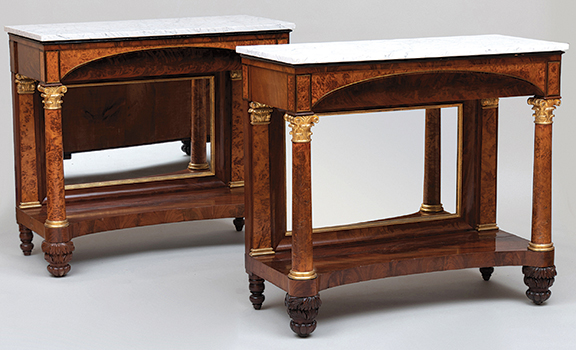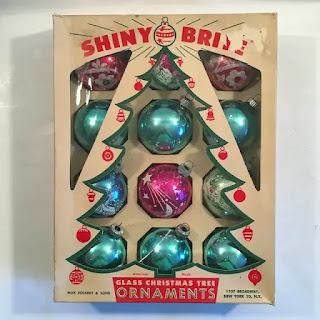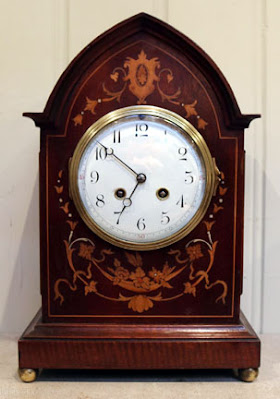 QUESTION: For the last couple of years, I’ve been buying vintage kitchen utensils. At first, I had planned to use them to decorate my Mid-Century Modern kitchen, but I got hooked on them and now purchase them not only at flea markets but online. Some I recognize, others I don’t. What types of gadgets did women use in their kitchen? And are these old utensils worth collecting?
QUESTION: For the last couple of years, I’ve been buying vintage kitchen utensils. At first, I had planned to use them to decorate my Mid-Century Modern kitchen, but I got hooked on them and now purchase them not only at flea markets but online. Some I recognize, others I don’t. What types of gadgets did women use in their kitchen? And are these old utensils worth collecting?
ANSWER: Kitchen gadgets are a popular collectible. And what’s interesting about them is that most are still usable in today’s kitchen. Even with all the electric and electronic devices available today, there are just some things that need to be done by hand, preferably with some sort of gadget. The proliferation of gadgets advertised on T.V., the Internet, and social media attests to this.
 There are dozens of quirky looking utensils—graters, slicers, ice cream scoops, ice picks, juicers, peelers, sharpeners, mashers, ricers, strainers, sifters, scoops, scales, and ladles. The list is almost endless.
There are dozens of quirky looking utensils—graters, slicers, ice cream scoops, ice picks, juicers, peelers, sharpeners, mashers, ricers, strainers, sifters, scoops, scales, and ladles. The list is almost endless.
All these utensils—from food mincers, pitters, and corers to spiral whisks and jar lifters—eased even the most basic of a housewife's culinary chores. Ingenious kitchen gadgets made exacting tasks—such as defining the outer edges of a pie crust with a pie crimper—a pleasure. Colored handles added to their attraction.
During the late 19th century, the modernization of the American kitchen had begun. The kitchen was a place where families gathered informally to cook and bake, make butter, can and preserve fruits and vegetables, peel potatoes, dry herbs, and wash dishes. And it took a variety of utensils to complete these jobs.
 From the 1920's through the 1940's, large and small companies manufactured hundreds of these gadgets, trying to help make kitchen work easier and more colorful. Brightly painted cooking utensils of the 1920s brought the first dab of color into American kitchens. Apple green led the cutlery color wheel, followed by Mandarin red.
From the 1920's through the 1940's, large and small companies manufactured hundreds of these gadgets, trying to help make kitchen work easier and more colorful. Brightly painted cooking utensils of the 1920s brought the first dab of color into American kitchens. Apple green led the cutlery color wheel, followed by Mandarin red.
 What could be better than homemade pie with homemade crust? Most pie crimpers had wooden handles and resembled small versions of today's pizza cutters Whalers often carved them of whale ivory for their wives and sweethearts back home. By the 20th century, makers introduced metal with the wood. Of course, there were many other baking gadgets like dough blenders, pie lifters, rolling pins, and spatulas.
What could be better than homemade pie with homemade crust? Most pie crimpers had wooden handles and resembled small versions of today's pizza cutters Whalers often carved them of whale ivory for their wives and sweethearts back home. By the 20th century, makers introduced metal with the wood. Of course, there were many other baking gadgets like dough blenders, pie lifters, rolling pins, and spatulas.
Before food processors and electric beaters, there were efficient hand and mechanical beaters. Among these were a variety of wooden handled spiral whisks, flat wire whips, and, of course, those very efficient rotary beaters. The forerunner to the food processor was the glass pitcher beater which came in variety of shapes and sizes.
 Old choppers and mincers had wooden handles and stainless steel curved blades. Many of the old ones, made of glass, wood, or steel, were more durable. Some glass jar choppers and mincers had handles to turn, making the work easier and faster. Of course, cooks also used grinders mounted to the corner of the kitchen table. Simply by putting almost anything into the wide opening at the top and turning the handle, they could grind meat, nuts, and berries.
Old choppers and mincers had wooden handles and stainless steel curved blades. Many of the old ones, made of glass, wood, or steel, were more durable. Some glass jar choppers and mincers had handles to turn, making the work easier and faster. Of course, cooks also used grinders mounted to the corner of the kitchen table. Simply by putting almost anything into the wide opening at the top and turning the handle, they could grind meat, nuts, and berries.
Department stores such as Abraham & Straus, Macy's,, and Wanamaker's led the market selling colorful vintage utensils and other kitchen paraphernalia.
Many small businesses produced these labor-saving utensils. One of the most notable was A & J Manufacturing Company of Binghamton, New York. Colored utensils from A & J can be found at flea markets and antique shops and shows simply because these products proliferated nationally and internationally in the kitchen-cutlery market for nearly 40 years.
 A & J began humbly in 1909 in the homes of Benjamin T. Ash and Edward H. Johnson, who lived in rural upstate New York. After creating and marketing their first product—a one-handed eggbeater—they added numerous other kitchen gadgets with natural wooden handles to their product line. By 1918, A & J had moved to a commercial building and employed 200 workers who cranked out some four million tools annually.
A & J began humbly in 1909 in the homes of Benjamin T. Ash and Edward H. Johnson, who lived in rural upstate New York. After creating and marketing their first product—a one-handed eggbeater—they added numerous other kitchen gadgets with natural wooden handles to their product line. By 1918, A & J had moved to a commercial building and employed 200 workers who cranked out some four million tools annually.
 The company was the first to offer knives, spatulas, ladles, and other items in one package.
The company was the first to offer knives, spatulas, ladles, and other items in one package.
These early 20th-century kitchen gadgets have a strong relationship to today’s “As-seen-on-TV” gadgets, advertised on many of the retro channels. Take the one-hand blender. Except for its streamlined shape and lack of a colored handle, it’s very similar to Ash’s and West’s one-handed eggbeater. It puts a new spin on the old saying, “What goes around comes around.”
To read more articles on antiques, please visit the Antiques Articles section of my Web site. And to stay up to the minute on antiques and collectibles, please join the over 30,000 readers by following my free online magazine, #TheAntiquesAlmanac. Learn more about "The Age of Photography" in the 2023 Holiday Edition, online now. And to read daily posts about unique objects from the past and their histories, like the #Antiques and More Collection on Facebook.















































